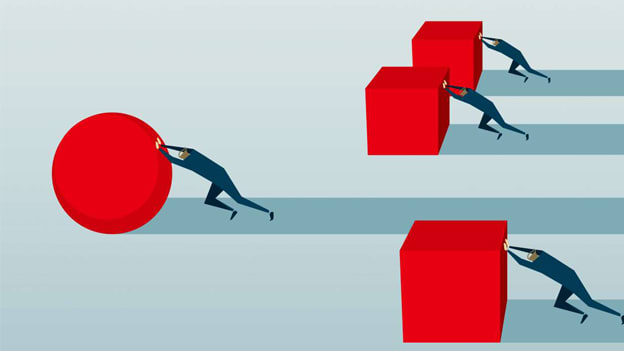Be the disruptive change you want to see in the world

In the past few decades, we have moved from the Industrial Age to Information Age to Innovation Age. Harvard Professor, Clayton Christensen, coined the term, “Disruptive Innovation”. It is an interesting process in which a service or a product initially starts at the bottom of the market and then moves up relentlessly eventually displacing the giants in the markets.
For example, more than a decade ago Blockbuster was the giant of the movie rental business. It was considered the world’s largest rental company. It was a multi-billion dollar industry with more than 8000 stores in the United States. At that time, Netflix was a small startup in the movie rental business. It was distributing DVDs to customers using a postal service. Its chances of surviving against giants such as Blockbuster, Walmart, etc. were rather slim. However, the CEO of Netflix, Reed Hastings, saw an opportunity where Blockbuster and others were lacking. Instead of having customers go to the stores, Netflix streamed movies instantly on TV, Xbox, Wii, iPad etc. This in turn minimized their infrastructure cost tremendously while increasing their customer satisfaction greatly. In less than a decade, Netflix enjoyed meteoric growth and became a multi-billion dollar industry while Blockbuster filed for bankruptcy. Blockbuster’s demise was caused by a lack of innovation while Netflix went on to become an American success story by challenging the status quo using disruptive thinking.
Many successful companies are reluctant to make radical changes (disruptive innovation). They become complacent and make only incremental changes (sustaining innovation) or stop innovating completely. Pretty soon, they find themselves out of business much like Kodak, Borders BookStores etc. Kodak was the world leader in the 1980s. Their refusal to modify their modus operandum by going digital resulted in filing for bankruptcy.
Jack Welch very aptly said, “When the rate of change outside exceeds the rate of change inside, the end is in sight.” (GE’s Annual Report on Relishing Change, 2000, Pg. 4). The future belongs to the people who are willing to rethink practices that made them successful in the past and challenge conventional wisdom. In the next decade, winning organizations and leaders will be ones that can come up with unconventional ideas and products leaving competitors staggering behind.
According to Luke Williams, the attitude, “If it ain’t broke, don’t fix it” is the enemy of disruptive thinking. It is very crucial that organizations identify processes in their businesses that are not necessarily broke and come up with unconventional strategies. By introducing disruptive change in this manner, they are likely to achieve unparalleled heights much like Nintendo’s Wii. They changed the conventional way of playing video games on its head by introducing a device that integrated a player’s movement right into the game. In Xbox & Playstation, gamers could play games by only moving their fingers. In Nintendo’s Wii, gamers can play golf, tennis, baseball, even dance and get a total body workout. They redefined gaming by challenging the norms and exploring new avenues.
The ability to think disruptively is going to be a game changer for organizations and individuals alike. In fact, disruptive innovation has been identified by world experts as a core and indispensible competency to succeed in the future. It is a way of thinking that can be learnt and applied by both organizations and individuals who are willing to challenge the status quo and transform their circumstances. Disruptive thinking is a profound yet simple process that can be embraced by people at all levels in an organization.
Luke Williams in his book, Disrupt, explains five stages involved in disruptive thinking:
- Craft a disruptive hypothesis: The stage involves kicking off the process with a wild question. While most people are thinking of tweaks in the project, it is important to ask, “What if I tried something that was never tried before?”
- Define a disruptive market opportunity: The stage involves discovering the disruptive market by exploring the least obvious paths.
- Generate several disruptive ideas: This is an ideation stage. The wilder the ideas, the better it helps in disruptive thinking. Novel ideas that stir the imagination help in overcoming stumbling blocks and transforming business opportunities.
- Shape them into a single, disruptive solution: In this stage, we take creative ideas and transform them into feasible solutions.
- Make a disruptive pitch that will persuade internal or external stakeholders to invest or adopt what you’ve created: In the final stage, it is important to sell the disruptive idea by under preparing the obvious and over preparing the unusual value it delivers in the business.
Jerry Garcia’s brilliant quote, “We do not merely want to be the best of the best. We want to be the only ones who do what we do” is the essence of disruptive thinking.” Mahatma Gandhi said, “Be the change you want to see in this world.” There is no better time than right now for us to become the disruptive change we want to see and experience in the world.













